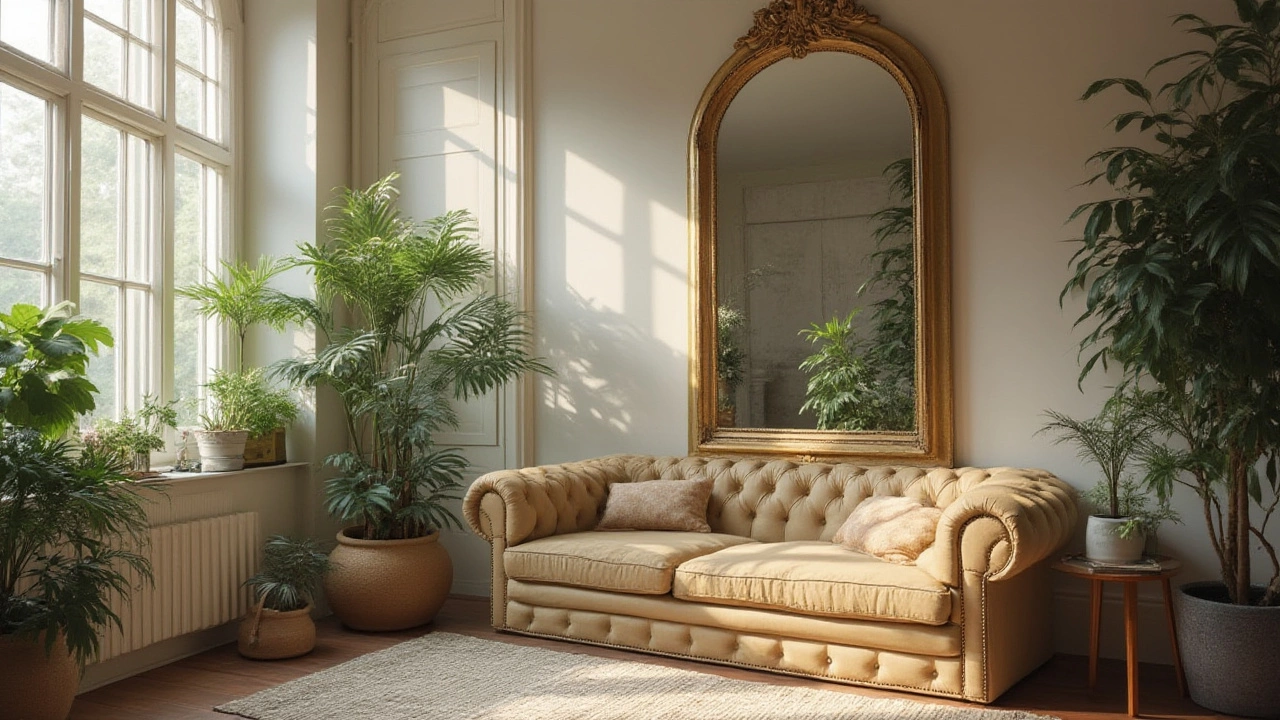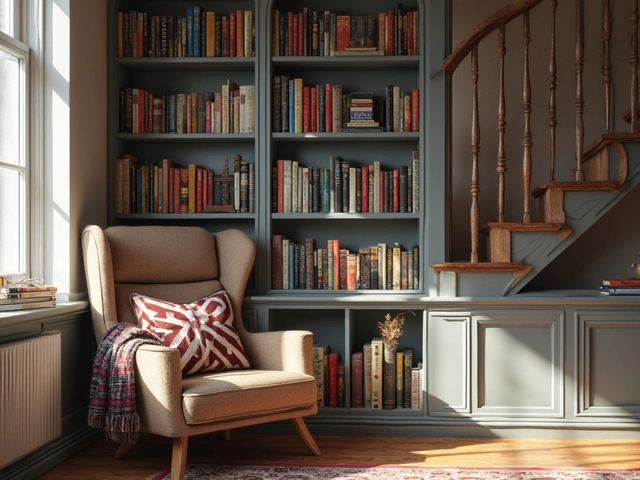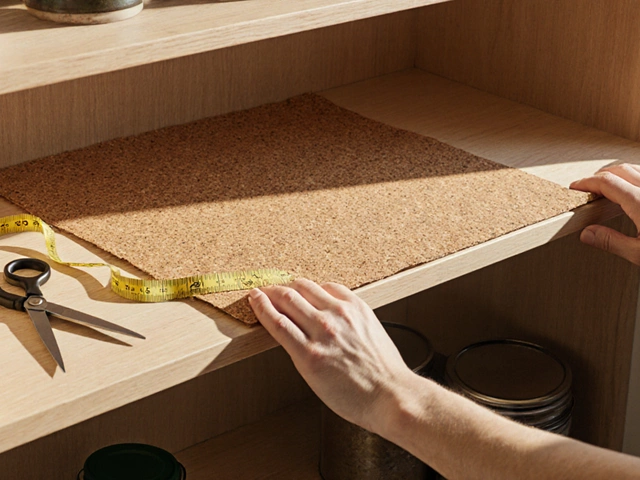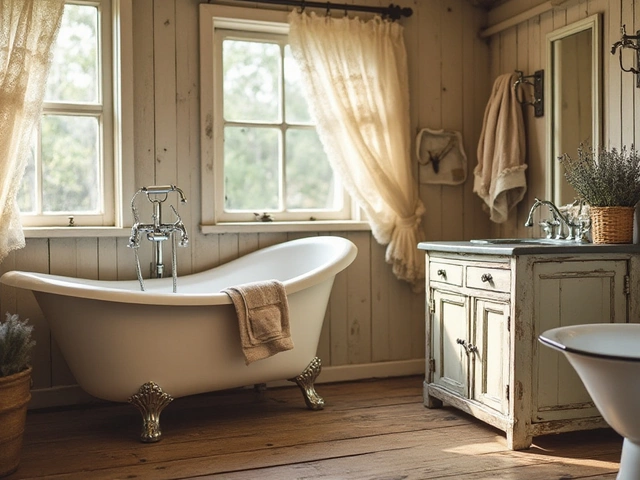Ever walk into a room and feel instantly brighter, more spacious, like the walls just nudged themselves back a little? Odds are, there’s a killer mirror working magic right in front of you. Mirrors aren’t just for checking out your reflection or wiping off your kid’s toothpaste art—they shape your space, bend the light, and set the whole mood of a room. And yet, it’s wild how many people still slap up any old glass rectangle and call it a day. If you want more than a reflection—if you want a home that actually feels as good as it looks—it’s time to get picky about what your mirrors look like, where they go, and how they fit your life.
Finding Your Mirror’s Purpose
Picking a mirror isn’t just about plugging a bare spot on the wall. Start by asking why you need a mirror in the first place. In a bathroom, the answer is obvious. You want something clear, accurate, and resistant to water spots or little handprints (thank you, Solene). But in your living room, do you want to amplify sunlight, reflect artwork, or just make your place look a little bigger? The reason you’re hanging a mirror should shape everything about it.
For instance, a mirror in the entryway pulls in light, gives you a last look before you head out, and, if you go big and bold, signals, "Hey, someone lives here who pays attention to details." If you’ve got a narrow hallway, a row of tall, skinny mirrors creates a rhythm and breaks up the monotony. A fun fact: real estate agents almost always recommend placing a sizable mirror opposite windows in smaller rooms—statistics show this simple trick can make a space feel up to 20% larger.
Some mirrors are basically functional art. Imagine a softly backlit LED mirror in your bathroom, making groggy mornings a little less harsh. Or a tinted mirror backsplash in the kitchen, injecting subtle drama. The point: each mirror in your house deserves a job and a vibe.
Choosing the Right Shape and Size
Mirrors come in an honestly insane variety of shapes—circle, oval, rectangle, arch, wave, and even blobby, freeform ones. The classic rectangle is practical, especially for doors and above sinks. But to break up boxy room shapes, consider round or softly curved designs. A round mirror brings balance to hard lines and instantly feels friendly. People have gotten obsessed with arch-shaped mirrors for a reason—they nod to vintage architecture and add a little softness to modern homes without going full grandma.
Here’s the kicker: size does matter, and bigger is usually better. A dining room mirror that stretches to almost the length of your buffet table delivers drama and can pull in outdoor greenery if placed opposite a window. Style influencers and interior designers agree, oversized mirrors can anchor a space just like a big piece of art. On TikTok, the "floor-mirror look" keeps trending—the kind you casually lean against your wall, as if accidentally left by a fashion photographer and never picked up. These look especially good in bedrooms and dressy entryways.
Still not sure what fits? Here’s a cheat guide:
- Bathroom mirrors: Shouldn’t be wider than the vanity, and leave 1–2 inches on either side for balance.
- Bedroom mirrors: Go tall if you want full-body views. Round or oval above the dresser feels luxe.
- Living room: Make a mirror at least two-thirds the length of a mantel or console.
- Gallery wall: Mix in petite mirrors with art for an eclectic vibe. Try gold-rimmed vintage finds!
| Room | Suggested Mirror Size | Popular Shapes |
|---|---|---|
| Bathroom | 24–36" wide | Rectangle, Round, Arch |
| Bedroom | 60"+ height | Floor, Oval, Round |
| Entryway | 30–48" wide | Circle, Rectangle |
| Living Room | 50–70" wide | Arch, Rectangle, Irregular |
You don’t always need to match shapes in a single room. Sometimes a mix creates energy. If your dining room has mostly straight lines in furniture, throw in a big round mirror. If your bedroom is full of curves, a geometric rectangle on the wall can snap it to attention.
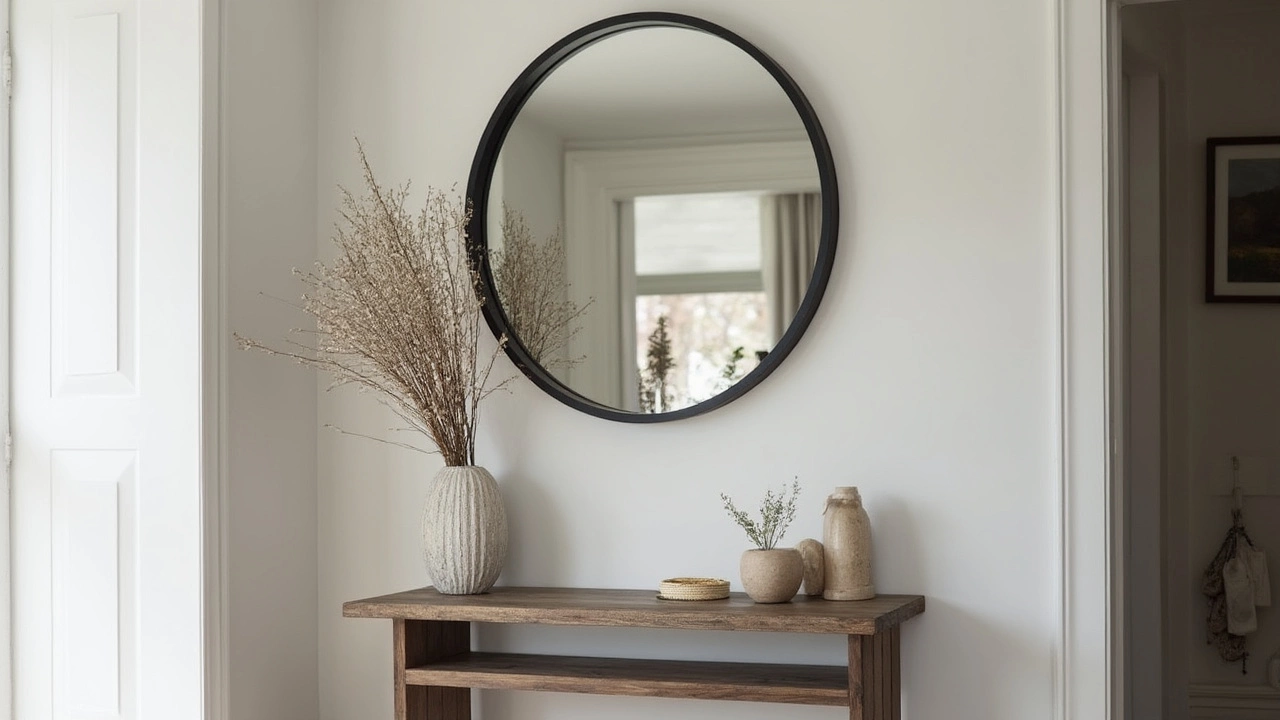
Frame It—Or Don’t?
The frame is where a mirror starts telling its story. Want a little Parisian romance? Hunt down a detailed, gilded frame—look for those ornate carvings found at estate sales or secondhand shops (I once scored one for under fifty bucks at a local flea market!). For a boho, laid-back vibe, rattan or woven mirrors look right at home above a console or in a nursery. And let’s not forget about clean, frame-free edges—the minimalist’s dream. Frameless mirrors, especially when beveled, look like they’re floating. They fit perfectly in modern bathrooms, or anywhere you need a little less fuss and a little more reflection.
Wood frames can warm up spaces that feel cold or impersonal. Painted or lacquered frames offer playful pops of color—think cobalt blue in a white bathroom. Black metal works for industrial, modern farmhouses, and even Japanese-inspired spaces; it never really goes out of style.
- Love a rustic look? Go for chunky wood or distressed paint finishes.
- Chasing glam? Gold, brass, pearl inlays, or a mirror on mirror frame adds shine.
- Dig the eclectic? Vintage shops are full of quirky frames nobody else on your block will have.
My daughter Solene’s room rocks a sunburst mirror—it catches rainbow light from her window crystals, and she loves to tell friends it was "handmade" (by Etsy, but we keep the magic alive). The frame can really change the mood of a mirror. Swapping an old, dull frame for something bold can make your whole room feel updated, and you don’t even have to move furniture.
If you’re dealing with a frameless mirror you hate, peel-and-stick frame kits exist, or you can get creative with driftwood or painted moldings from the hardware store. Never underestimate what a hot glue gun can do for a boring mirror!
Mirror Placement and Trends Worth Following
Placement makes or breaks your mirror game. Rule number one: put mirrors where they’ll reflect light, beauty, or at least something intentional—not your overflowing laundry basket. Across from a window? Perfect. Bouncing sunlight into a dark corner? Gold star. Facing a gorgeous bookshelf or an oversized houseplant? Instant Instagram cred.
But think about height, too. Hang mirrors so your eye hits the middle of the glass—not so high it’s just a fly-catcher, not so low it reflects only your knees. For tall floor mirrors, slight angles back help fake taller ceilings. In dining rooms, hanging a mirror a couple of feet above the table makes dessert (and parties) look even more tempting.
Some newer mirror trends are actually super functional. "Smart" mirrors with LED borders and built-in Bluetooth let you blast a playlist while getting ready. Antique mirror glass—where the silvering is purposely aged or spotty—is having a serious moment, especially in high-end hotels and Pinterest boards. Cloud-shaped and asymmetrical mirrors are showing up all over decor feeds—they bring movement and youthfulness without needing bright paint or crazy wallpaper.
There’s data to back all this up: The Global Mirror Market is booming, expected to top $10.5 billion by 2027 (MarketWatch). That’s because people are seeing mirrors as a design centerpoint, not just some glass afterthought.
- Tip: In the kitchen, a mirrored backsplash doubles your space visually and never feels outdated.
- For teen hangouts or home gyms, giant wall mirrors crank up the brightness and energy instantly.
- On small balconies, try a weather-resistant mirror to bounce back greenery for a lush "urban jungle" effect.
One last thing—always check what a mirror reflects before nailing it up. You don’t want to stare straight at a smoke detector or a pile of shoes every time you glance over. The best mirrors make your whole space feel considered, not accidental.
Mirrors do more than double-check your lipstick or become a toddler’s favorite painting surface. Choose wisely—think about the purpose, the shape, the frame, and especially the placement. A brilliant mirror brings in light, depth, character, and sometimes just the right kind of surprise your room was missing. And if you get it right, you might even catch your own smile as you walk by—and isn’t that kind of the point?

